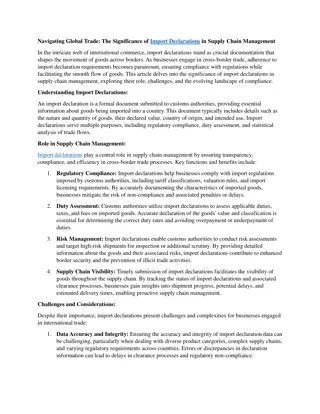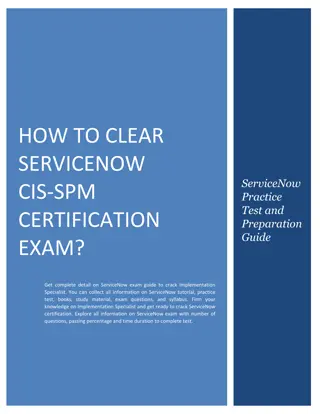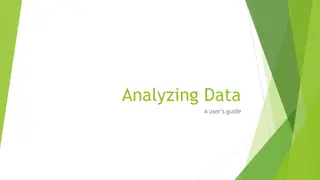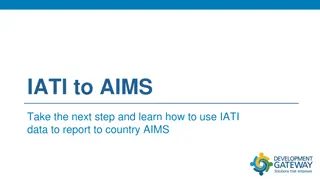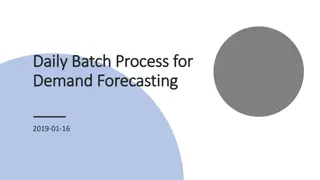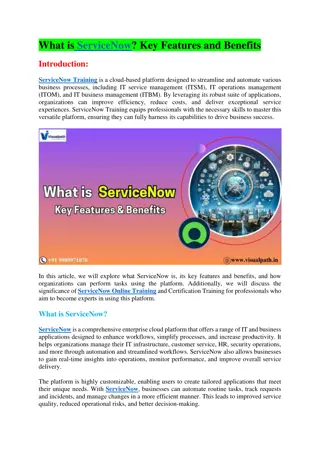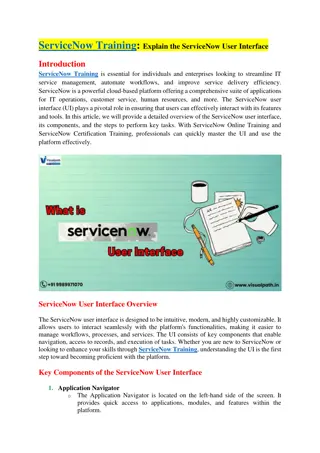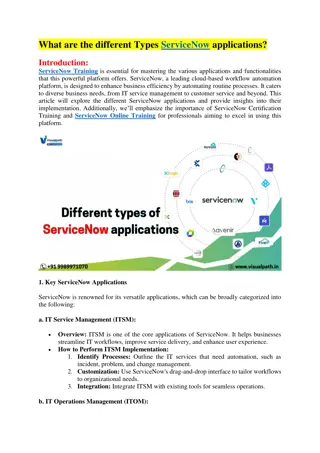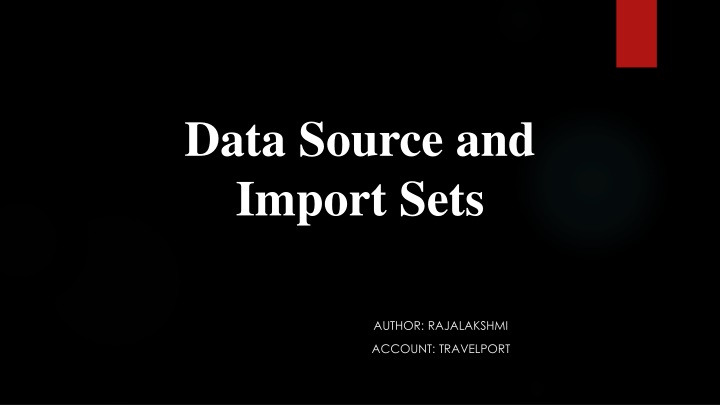
Data Source, Import Sets, and Mapping in ServiceNow
Explore the functionalities of Import Sets in ServiceNow, which allow administrators to import data from various sources and map it to ServiceNow tables. Learn about coalescing, terminologies, mapping options, and objects in transform maps. Discover how transform event scripts play a role in data transformation within the platform.
Download Presentation

Please find below an Image/Link to download the presentation.
The content on the website is provided AS IS for your information and personal use only. It may not be sold, licensed, or shared on other websites without obtaining consent from the author. If you encounter any issues during the download, it is possible that the publisher has removed the file from their server.
You are allowed to download the files provided on this website for personal or commercial use, subject to the condition that they are used lawfully. All files are the property of their respective owners.
The content on the website is provided AS IS for your information and personal use only. It may not be sold, licensed, or shared on other websites without obtaining consent from the author.
E N D
Presentation Transcript
Data Source and Import Sets AUTHOR: RAJALAKSHMI ACCOUNT: TRAVELPORT
Import Sets Import sets allow administrators to import data from various data sources, and then map that data into ServiceNow tables. The Import Sets table acts as a staging area for records imported from a data source. A transform map determines the relationships between fields in an Import Set table and fields in an existing ServiceNow table Requires a Coalesce Importing sets will skip records when the data in the instance matches the data being imported
Terminologies Coalesce Defines uniqueness of records In case of multi coalesce, the first record that matches gets updated Import Set table The staging table in ServiceNow The table gets created when the Data source is created Data source Source of Data (JDBC, Attachment, LDAP, etc) Foreign record insert Updating a reference field on a table, the import modifies the data in a referenced table
Mapping Options Automatic Mappin Utility Field names of the import sets match the field names of the target table In this case, use the below related link in the Transform Map record:
Objects in Transform Map1 action: Insert Update ignore = Boolean (True or False) source: Contains the import source record currently being transformed. target: Contains the import target record currently being inserted. log: log.info("This is an information message"); log.warn("This is a warning message"); log.error("This is an error message");
Objects in Transform Map2 map: name sys_id source_table target_table order error: Boolean (True or False) error_message: String (output message) status_message: String (output message)
Transform Event Scripts The When field choices are: onStart: executes at the start of an import before any rows are read onAfter: executes at the end of a row transformation and after the source row has been transformed into the target row and saved onBefore: executes at the start of a row transformation and before the row is transformed into the target row onChoiceCreate: executes at the start of a choice value creation before the new choice value is created onComplete: executes at the end of an import after all rows are read and transformed onForeignInsert: executes at the start of the creation of a related, referenced record before the record is created onReject: executes during foreign record or choice creation if the foreign record or choice is rejected. The entire transformation row is not saved.
Run Script in Transform Map (function transformRow(source, target, map, log, isUpdate) { // Add your code here if(source.u_location.nil() || source.u_script.nil()) { ignore = true; log.info("Ignoring empty record: "+source.u_unique_field+" as the location or script was empty"); } })(source, target, map, log, action==="update");
Web Service Import Sets Web Service Import Sets complement direct web services and scripted SOAP web services providing a web service interface to import set tables. Type of Web service transformation: Synchronous by default You can access a web service import set WSDL by specifying the import set table name + ".do?WSDL" on the URL. For example: http://<instance name>.service-now.com/imp_notification.do?WSDL To debug a SOAP Request coming into the system, create the system property and set it to true: glide.processor.debug.SOAPProcessor

